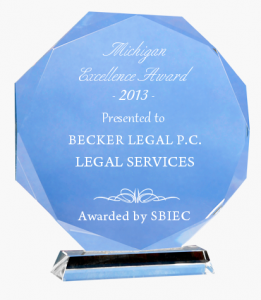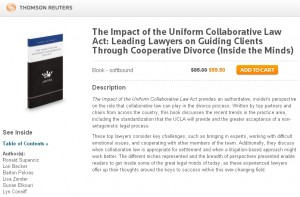I so often wish that the couples we work with in the Collaborative Divorce Process could see themselves in a parallel universe going through litigation so they could fully grasp the scope of what a huge difference CDP makes.
An article written by CNBC writer Elizabeth MacBride entitled Avoid Divorce Settlement Blunders seeks to address some of the major pitfalls of divorce settlements. She touches on the benefits of the Collaborative Divorce Process, but I would like to expound on her observations and analysis over the next few weeks to very clearly illustrate how CDP, particularly as compared to other processes available for obtaining a divorce, can be the difference between a devastating, drawn out divorce and a divorce that allows for moving forward with dignity and confidence.
This week I would like to focus on Pitfall 1: Taking a Case to Trial When You Don’t Need To
MacBride’s article cites the following statistic: “Only about 5 percent of divorces end up in a full-blown trial.” Yet, if you consult with and hire a litigating attorney, all of the focus from day one (and all of your money) will go toward preparing for a trial. On the flip side, in CDP, the focus is on resolving all the issues and reaching an agreement that is focused on the well being of the family. People often balk at the perceived cost of the full team of professionals for the Collaborative Divorce Process. According to research, CDP is often times less expensive, even with a full team. Even more importantly, Collaborative provides better value. The whole team is dedicated to staying out of the court process and every penny is put toward professionals whose sole focus is to help address ALL of the issues of your divorce, and ensure you, your spouse, and your family feel secure moving forward after the divorce. In Collaborative, none of your energy or your money is put toward preparing for a trial that in all likelihood will never actually happen.
Another significant consideration is cost (both emotional and financial) once the divorce is finalized. In the litigation process, there is very little ownership over the outcome, and thus, parties are seldom happy with the decisions a judge, or other third party who doesn’t understand their family situation and needs, makes for them. Over 70% of litigated cases return to court for post-judgment issues. By comparison, less than 10% of cases finalized in the Collaborative Divorce Process go to court for post-judgment issues.
Stay tuned for Pitfalls 2 & 3 regarding tax and financial issues and how the structure of the Collaborative Process can help avoid these.





 Lori D. Becker is featured on Super Lawyers.
Lori D. Becker is featured on Super Lawyers.